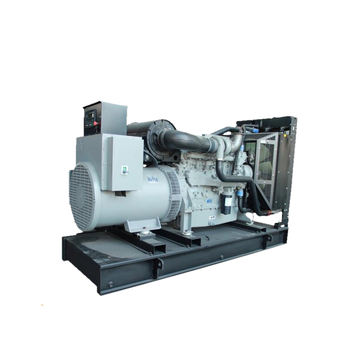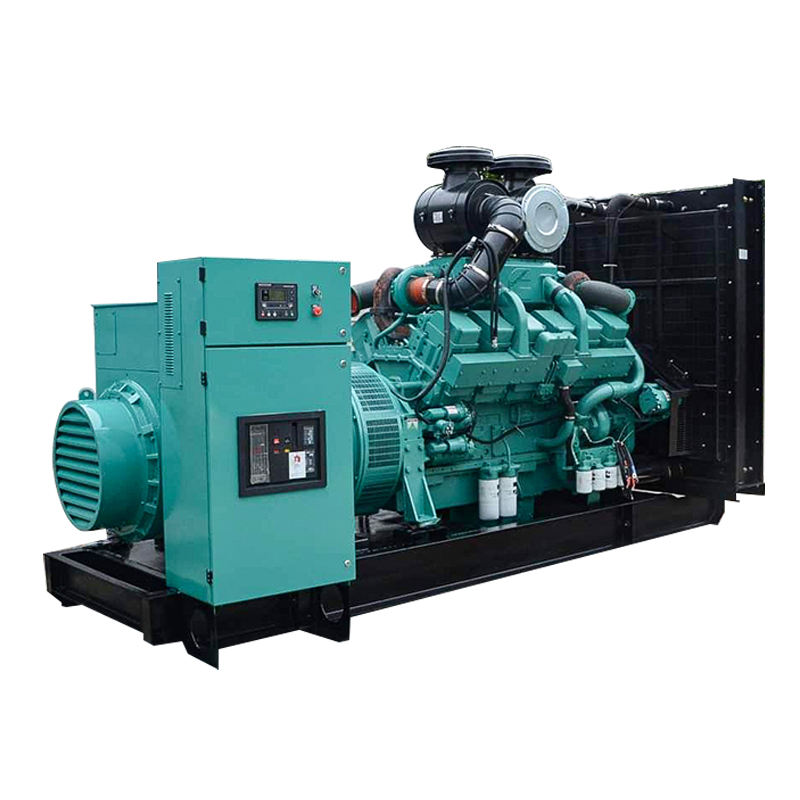Ensuring uninterrupted power supply in commercial buildings is not just a matter of convenience; it's a critical aspect of operational continuity, safety, and often, regulatory compliance. When the grid fails, a robust backup power system, typically centered around a generator set, becomes the lifeline of the facility. However, accurately determining the required capacity of a generator set is far more complex than simply adding up the wattage of all connected equipment. Many hidden factors can significantly impact the actual power demand and the generator's ability to meet it reliably. Overlooking these subtle yet crucial elements during the planning phase can lead to undersized generators, resulting in system failures during critical outages, or oversized generators, leading to unnecessary capital and operational expenses. Therefore, a thorough understanding of these hidden factors is paramount for effective backup power planning in any commercial setting, ensuring that the chosen generator set truly provides the intended level of protection and performance when it's needed most.
The Myth of Simple Load Calculation
Many initial approaches to generator set capacity calculation fall into the trap of simplistic load aggregation. This method often involves identifying all essential loads within a building – lighting, HVAC systems, critical equipment, security systems, and so forth – and summing up their nameplate power ratings. While seemingly straightforward, this approach fundamentally misunderstands the dynamic nature of electrical loads in a commercial building. Nameplate ratings represent the maximum potential consumption, not necessarily the actual operational demand at any given moment. Furthermore, it ignores the crucial fact that not all loads operate simultaneously or at their maximum capacity all the time. Relying solely on this method can lead to a significantly overestimated capacity requirement, resulting in the selection of an unnecessarily large and expensive generator. The real challenge lies in uncovering and accurately quantifying the 'hidden' factors that influence the true power demand, moving beyond the static snapshot provided by nameplate ratings to a more realistic and dynamic assessment of the building's backup power needs.
Future Expansion and Scalability Concerns
One often-overlooked hidden factor is the anticipation of future building expansions or changes in operational needs. Commercial buildings are rarely static entities; they evolve over time. Businesses grow, new equipment is added, and building layouts may be reconfigured. If the initial generator set capacity calculation only accounts for the current power requirements, it risks becoming inadequate in the near future. Failing to consider potential future load increases can lead to costly and disruptive upgrades later on. Therefore, proactive backup power planning must incorporate scalability. This means not only assessing current needs accurately but also projecting potential load growth over the lifespan of the generator set, typically 10-20 years or more. Factors like planned building expansions, anticipated increases in equipment density, or changes in the building's usage profile should all be factored into the capacity calculation. Choosing a generator set with sufficient headroom for future expansion, or designing a system that allows for modular upgrades, is a prudent investment that ensures long-term reliability and avoids premature obsolescence.
Environmental Conditions and Derating Factors
Environmental conditions are another set of hidden factors that profoundly impact generator set performance and capacity. Manufacturers typically rate generator sets under standard or ideal conditions, such as sea level and moderate temperatures. However, real-world installations often deviate significantly from these ideal parameters. Altitude, ambient temperature, and humidity all influence the engine's power output and the alternator's efficiency. For instance, at higher altitudes, the thinner air reduces the engine's combustion efficiency, leading to a decrease in power output. Similarly, high ambient temperatures can reduce engine performance and alternator cooling capacity. These environmental factors necessitate the application of 'derating factors' in generator set capacity calculations. Derating factors are multipliers that reduce the generator's rated capacity to account for non-ideal operating conditions. Failing to apply appropriate derating factors based on the specific installation environment can result in a generator set that cannot deliver its rated power, especially during peak demand or under adverse weather conditions, compromising the reliability of the entire backup power system.
Load Diversity and Power Factor: Beyond Connected Load
Moving beyond the simplistic summation of connected loads, understanding load diversity and power factor is critical for accurate generator set sizing. Load diversity acknowledges that not all connected loads in a commercial building will operate at their maximum rated power simultaneously. For example, lighting circuits might operate at full capacity, while HVAC systems cycle on and off based on temperature control. Calculating load diversity involves estimating the percentage of connected load that is likely to be operational concurrently. This percentage, known as the diversity factor, is typically less than 100% and varies depending on the building type and operational profile. Power factor, on the other hand, reflects the efficiency with which electrical power is used. Inductive loads, such as motors and transformers, introduce reactive power, which does not contribute to actual work but still burdens the generator. A low power factor means a larger portion of the generator's capacity is spent on supplying reactive power rather than real power. Accurately assessing load diversity and power factor, often through load audits and power quality analysis, allows for a more realistic and often lower generator capacity requirement compared to simply using the sum of connected loads.
Transient Loads and Motor Starting Demands
Transient loads, particularly motor starting, represent a significant hidden factor in generator set capacity calculations. Many essential systems in commercial buildings, such as HVAC compressors, pumps, and elevators, rely on electric motors. When a motor starts, it draws a surge of current, often several times its running current, for a brief period. This inrush current, known as the motor starting current, can create a significant transient load on the generator set. If the generator is not adequately sized to handle these transient loads, it can experience voltage dips and frequency fluctuations, potentially causing equipment malfunctions or even generator tripping. Therefore, generator capacity calculations must account for the largest motor starting load expected in the building. This often involves analyzing the starting characteristics of critical motors and using specialized sizing methodologies that consider motor starting kVA requirements in addition to the continuous operating load. Techniques like soft starters or variable frequency drives can help mitigate motor starting inrush currents, but their impact on generator sizing still needs to be carefully evaluated.
Fuel Availability and Required Run Time
While generator capacity focuses on the power output, fuel availability and required run time are equally critical hidden factors that influence the overall backup power system design. The generator set's fuel storage capacity directly dictates how long it can operate during a grid outage. Commercial buildings have varying backup power duration requirements based on their function and criticality. Hospitals and data centers, for example, may require continuous backup power for extended periods, potentially days or even weeks. Office buildings or retail spaces might have shorter required run times, but even then, sufficient fuel must be available to bridge the gap until grid power is restored. Factors like fuel tank size, fuel consumption rate at different load levels, and fuel delivery logistics all need to be considered. Underestimating fuel consumption or failing to plan for adequate fuel storage can lead to premature generator shutdown during a prolonged outage, negating the entire purpose of the backup power system. Therefore, fuel availability and run time requirements must be explicitly factored into the overall backup power planning process, alongside generator capacity calculations.
Maintenance, Testing, and Long-Term Reliability
The long-term reliability and sustained capacity of a generator set are heavily influenced by maintenance and regular testing – often hidden factors in initial capacity calculations. A generator set, like any complex mechanical and electrical system, requires routine maintenance to ensure optimal performance and longevity. Neglecting maintenance can lead to performance degradation over time, potentially reducing the generator's actual capacity and increasing the risk of failures during critical outages. Regular preventative maintenance, including engine servicing, lubrication, cooling system checks, and electrical system inspections, is essential. Furthermore, periodic testing under load is crucial to verify the generator's ability to perform as expected and to identify any potential issues before they become critical. These tests should simulate real-world outage scenarios and load profiles to ensure the generator can handle the building's backup power demands effectively. Failing to factor in the ongoing costs and requirements of maintenance and testing into the overall backup power plan can lead to unexpected operational expenses and, more importantly, compromise the long-term reliability and availability of the backup power system when it is most needed.
In conclusion, accurate generator set capacity calculation for commercial buildings extends far beyond simple load summation. Hidden factors such as future expansion, environmental conditions, load diversity, power factor, transient loads, fuel availability, and the importance of maintenance and testing all play crucial roles in determining the true backup power requirements. A comprehensive approach that considers these factors is essential for ensuring a reliable and cost-effective backup power solution. Failing to address these hidden complexities can lead to either undersized systems that fail during critical outages or oversized systems that represent unnecessary capital expenditure and operational inefficiencies. Therefore, engaging with experienced professionals who understand these nuances and can conduct thorough site assessments and load analyses is a wise investment in the long-term resilience and operational continuity of any commercial building. Have you ever considered how these hidden factors might be impacting your current backup power plan? Understanding these elements is the first step towards ensuring your building is truly prepared for unexpected power disruptions.
For more detailed information, please visit our official website: backup power





